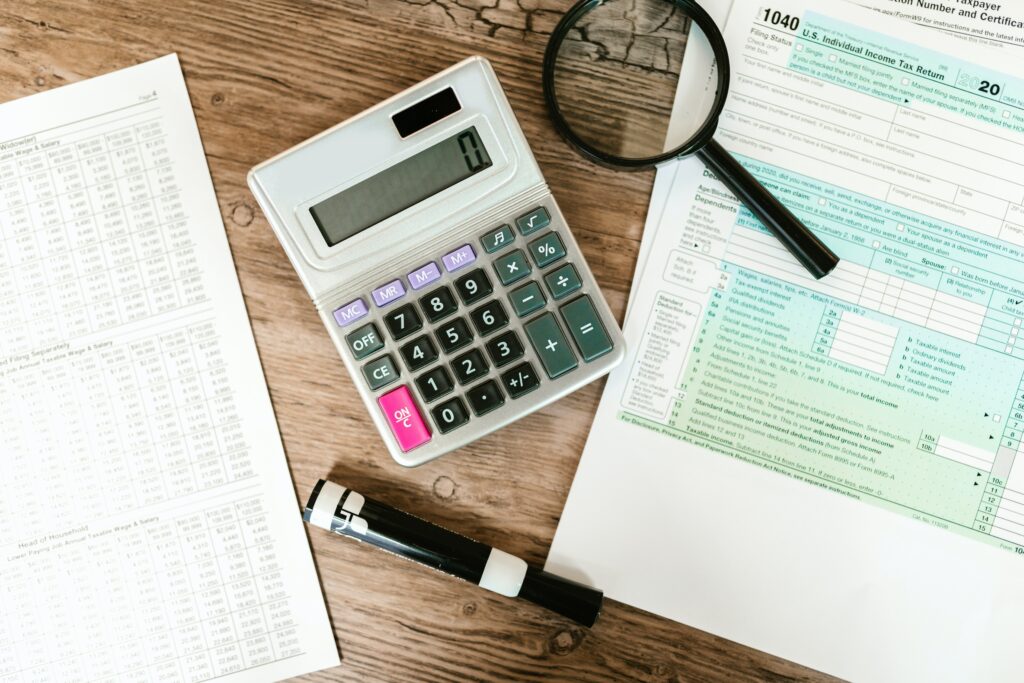The COVID-19 virus has wreaked havoc across all businesses, forcing some to shut their doors or layoff employees.But there is a lifeline available to help businesses stay afloat: the Employee Retention Credit (ERC).
It is a refundable credit that can be claimed by employers on certain wages paid to employees in the event of a pandemic.It is designed to help businesses keep their employees on payroll, even if they are unable to operate normally.
The ERC may be able to help keep your employees and business afloat if your company has been impacted.Visit the IRS website to learn more about ERCs and how you can claim them. You can also speak with a tax adviser or read the following.

For a brief reading of what the Employee Retention Credit or ERC is, take a look at this video from the YouTube channel “ERC Specialists”. You can also continue below to read an in-depth explanation of ERC.
-a}
The Employee Retention CreditEmployee Retention Credit For Employers Affected By Qualified Disasters
Employee Retention Tax Credit (ERC), also known as the Employee Retention Tax Credit, is a refundable tax credit that employers can claim for qualifying wages paid to their employees during COVID-19.It was established by the Coronavirus Aid, Relief, and Economic Security Act in March 2020 in order to help businesses retain their employees, even if it meant they could not operate normally.
ERCs can be obtained by businesses of any size, including those exempt from tax.To be eligible for the ERC, a company must have had a significant fall in gross receipts and/or have been fully or partial suspended as a result of an COVID-19 government order.
The ERC provides a financial boost for businesses that are affected by pandemic.It can be used to help businesses keep their employees, cover their payroll costs and invest for the future.
Why was the ERC created?
The COVID-19 pandemic triggered a severe economic recession, forcing many companies to layoff their employees or close down.The ERC aims to help companies keep their staff on the payroll in order to quickly reopen after the pandemic is over.
ERC Benefits
ERCs can give businesses impacted by pandemics a financial boost.It can also assist businesses in retaining their employees. This is vital for a fast recovery.
The ERC is also a refundable credit. This means that businesses are able to claim it, even if there are no taxes due.Businesses can also claim ERC for wages paid by employers to employees who do not work due to COVID-19. Examples include employees who were furloughed and quarantined. Employee Retention Credit For Employers Affected By Qualified Disasters
Impact of the ERC on Businesses and the Economy
The ERC has helped to keep millions of Americans employed during the COVID-19 pandemic.The ERC also helped to keep businesses afloat through the economic storm.
It is estimated that the ERC has saved more than 10 million jobs, and prevented hundreds of thousands of businesses from shutting their doors.It also contributed to the recovery of the economy by increasing consumer spending, and investing.

> > Click Here to Find Out if You Are Eligible for ERC< <
Eligibility
For businesses affected by COVID-19, the Employee Retention Credit can help them retain their employees.
The main difference between the 2020 and 2021 ERC requirements is the gross receipts decline test.In order to qualify for the 2020 ERC, businesses must have had a substantial decline in gross revenues of at least half compared with the same quarter last year.In 2021, a business must have experienced a significant decline in gross receipts of at least 20% compared to the same quarter in the previous year.
Business Qualifications
Businesses can qualify for the ERC in two ways:
- ERC eligibility for businesses suspended or suspended partially by a government.Businesses that are required to close down, operate with a reduced capacity or adhere to certain restrictions can be eligible for the ERC.
- Significant decline in gross revenues: Businesses that have experienced a significant drop in gross revenue due to COVID-19 are also eligible for ERC.A significant decline in gross receipts is defined as a decline of at least 50% in a quarter in 2020 or at least 20% in a quarter in 2021 compared to the same quarter in the previous year.
Example Scenarios
Below are examples and scenarios that illustrate each of the eligibility criteria:
Fully or partially suspended by a government order:
- ERC can be claimed by a restaurant forced to shut down due to an order from the government.
- ERC eligibility is granted to a gym that must operate at a lower capacity as a result of a government order relating to COVID-19.
Significant decline in gross receipts:
- A retail store that experiences a 50% decline in sales due to COVID-19 is eligible for the ERC.
- ERC is available to manufacturers who are unable to run at full capacity because of supply chain disruptions.

> > Click Here to Find Out if You Are Eligible for ERC< <
Credit Amount
Employee Retention Credit is a tax deduction that businesses may claim on wages they paid employees in the COVID-19 pandemic.The amount of the credit is dependent on the business’s quarter and employees.
For 2020, the credit is equal to 50% of qualified wages paid to employees up to a maximum of $10,000 per employee.For 2020, a business may receive a maximum credit of $5,000 per employee.
For the first three quarters of 2021, the credit is equal to 70% of qualified wages paid to employees, up to a maximum of $10,000 per quarter per employee.For the first 3 quarters in 2021, an employer could receive up to $7,000 per employee each quarter. That’s up $21,000 per worker for the whole year.

> > Click Here to Find Out if You Are Eligible for ERC< <
Claiming the Credit
How to Claim the ERC when Filing Federal Employment Tax Returns
To claim the Employee Retention Credit (ERC) on federal employment tax returns, businesses must file an amended Form 941-X, Adjusted Employer’s Quarterly Federal Tax Return or Claim for Refund.This form is applicable to any quarter during which the business qualifies for the credit.
Claim the ERC by Claiming it in Advance
Businesses have three options for claiming the ERC:
- Claim the credit ahead of time: Businesses may claim the credit by reducing the quarterly employment tax deposit.To do so, businesses need to file IRS Form 7200, Advanced Payment of Employer credits and taxes.
- Reduce employment taxes deposits. Businesses are also able to reduce their quarterly employment tax deposits by the amount expected credit.To reduce the deposits, businesses need to file IRS Form 941 and include the amount of credit that they expect to receive.
- Businesses who have already paid employment taxes may request a credit refund by filing IRS Form 941X.
Calculating the Credit Amount and Avoiding Double-dipping with Other Relief Programs
Multiplying the amount of ERC by the credit rate is how the ERC amount is calculated.Credit rates are 50% in 2020 and 70% during the first three-quarters of 2021.
Businesses should be careful to avoid double-dipping with other relief programs.For example, businesses cannot claim the ERC for wages that are also used to claim the Paid Family and Medical Leave Credit or the Work Opportunity Tax Credit.
Tips and Resources for Recordkeeping and Documentation
Businesses should keep detailed records detailing all qualified wages paid by employers to employees over the ERC.This will allow businesses to calculate accurately the amount of credit they are entitled to and support their claim in the event that it is audited. Employee Retention Credit For Employers Affected By Qualified Disasters
Here are a couple of tips to help you with your recordkeeping:
- Keep a record of all your payroll documents, such as W-2 forms and 941s.
- Keep track at all times of employee hours, including vacation, sick and holiday leave.
- Keep track of all wages paid to employees, including base wages, bonuses, and overtime pay.
- Keep track of all government orders that affect your business.
The IRS provides a variety of resources to help businesses claim the ERC, including FAQs, fact sheets, and videos.Businesses can contact IRS for help by calling 1-800-829-1040.

> > Click Here to Find Out if You Are Eligible for ERC< <
Examples of Eligible Businesses
Businesses that are affected by COVID-19 can receive the Employee Retention (ERC).The following are examples of businesses that may be eligible for the Employee Retention Credit (ERC):
- Restaurants are forced to close by government order
- Retail shops that have experienced a substantial decline in sales
- Disruptions in the supply chains prevent manufacturers from working at full capacity
- Nonprofit organizations that saw their donations decline
- Hotels and hospitality businesses
- Travel and Tourism Businesses
- Entertainment and event businesses
- Personal care businesses
- Gyms and fitness studios
- Salons, spas
- Stores that sell non-essential merchandise
- Businesses that were required to operate at a reduced capacity
- Businesses who are required to implement new safety standards and protocols
- Costs incurred by businesses as a result of COVID-19
These examples are not the only ones that qualify. Any business that has been suspended in whole or part by an order of government or that has seen a decline in gross sales due to COVID-19 could also be eligible. Employee Retention Credit For Employers Affected By Qualified Disasters
Below are some specific examples on how businesses have utilized the ERC.
- A restaurant that was forced to close for several months due to a government order was able to use the ERC to keep its employees on the payroll.
- The ERC was used by a retail store to offset payroll costs after it experienced a 50% drop in sales as a result of COVID-19.
- A manufacturer that was unable to operate at full capacity due to supply chain disruptions was able to use the ERC to keep its employees on payroll and continue to produce essential goods.
- A nonprofit that saw their donations decrease due to COVID-19, was able to utilize the ERC and keep its employees employed to continue to provide vital services.
If you are a business owner and you are unsure whether or not you are eligible for the ERC, I encourage you to contact a tax professional.They can assist you in determining your eligibility, and claiming the credit, if you qualify.

> > Click Here to Find Out if You Are Eligible for ERC< <
Avoiding Scams
ERC Scams, Aggressive Marketing and Other Risks
Scammers are targeting businesses eligible for the Employee Retention Credit.Scammers will use aggressive marketing techniques to get businesses to sign up, even if they are not eligible for ERC.
Red Flags and Warning Signs
Here are some warning signals and red flags that can help you to identify ERC scammers.
- They promise you will get a refund even if they don’t review your records.
- They charge you high upfront fees or a certain percentage of your refund.
- The salespeople are aggressive and use high-pressure tactics. Employee Retention Credit For Employers Affected By Qualified Disasters
- They aren’t affiliated with an established tax professional association.
- The first thing they ask you for is your personal and financial information.
Reporting Suspicious Activity and Protecting Personal Data
If you have been contacted by an ERC scammer , you should notify the IRS .You can report this activity by calling 1-800-829-1040.
It is important to safeguard your personal and financial data.Never give out personal information to someone who contacts you without your permission.If you have any doubts about the legitimacy of a business, you can look at their online reviews or ask for help from the IRS.

> > Click Here to Find Out if You Are Eligible for ERC< <
Conclusion
We have covered the Employees Retention (ERC) Credit in this article. This is a tax credit program that helps employers who qualify to retain their staff during the COVID-19 pandemic.We have discussed eligibility requirements, claiming processes, and possible scams related the ERC.
We have also provided some tips and resources for recordkeeping and documentation.The ERC offers employers a valuable opportunity to reduce their tax liabilities, improve cash flow and support the workforce.If you’re an eligible employer, you should claim the credit. You can also seek professional advice if you need it.

> > Click Here to Find Out if You Are Eligible for ERC< <
Frequently Asked Questions about Employee Retention Credits
Employee Retention Credit For Employers Affected By Qualified Disasters
What is ERC?
It is a refundable tax credit available to businesses that were impacted by the COVID-19 pandemic.
This credit equals 50% of the qualified wages that employees received in 2020, and 70% of the qualified wages they receive in the first quarter of 2021.
Who can apply for the ERC program?
Businesses that have experienced a significant drop in gross receipts or those that were suspended or fully suspended by government orders due to the COVID-19 epidemic are eligible for the ERC.
What is qualified wage?
Included in qualifying wages are wages, salaries, and tips paid to employees.
Also, health insurance premiums that employers pay are considered wages.
How can I claim my ERC?
Businesses can claim ERCs by filing amended Forms 941 or 941-X at the IRS.The amended form 941-X is required to be filed within 3 years from the date that the original Form 941 has been filed.
Do I need to repay the ERC?
The ERC, however, is a non-refundable tax credit.
Can I claim ERC even if I have received a PPP Loan?
Businesses can still claim the ERC if they have received a Paycheck Protection Program (PPP) loan.
Businesses cannot claim the ERC for wages that were also used to claim the PPP loan.
Can self-employed individuals claim the ERC?
Yes, self-employed individuals are eligible for the ERC.
Schedule C is the form that self-employed people can use to claim their ERC.
Can nonprofit organizations claim ERC?
Yes, non-profit organizations are eligible to apply for ERC.
Nonprofit organizations are eligible to claim the ERC when filing their Forms 990-T.
Can companies with a foreign subsidiary claim ERC?
Yes, employers can claim ERC when they pay wages to foreign employees.
However, they must also meet certain additional requirements before they are eligible to claim the benefits.
What are the common mistakes businesses make when they claim ERC?
When claiming your ERC; businesses must be aware of the following mistakes:
- Credit calculation error
- All wages are not included
- Failing to amend Forms 941-X within the specified timeframe.
